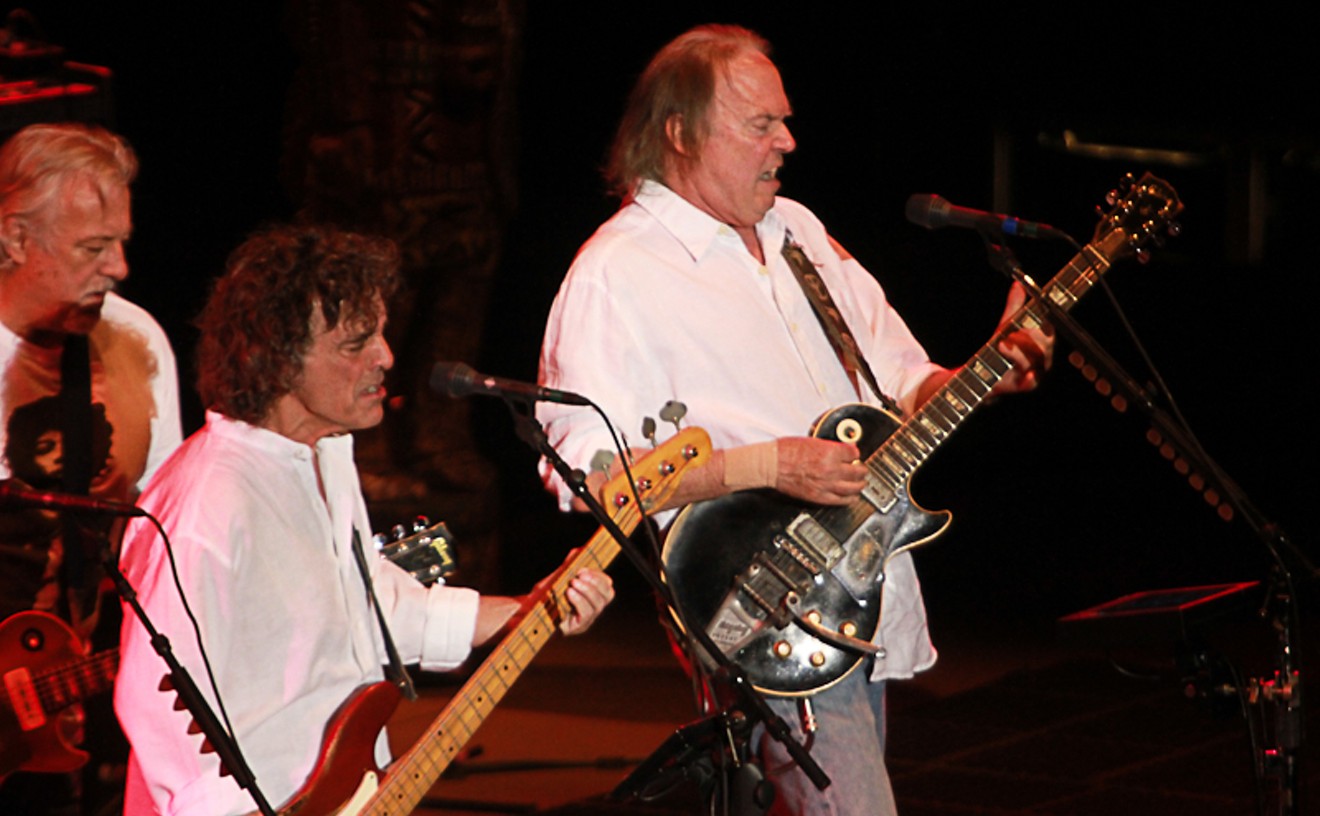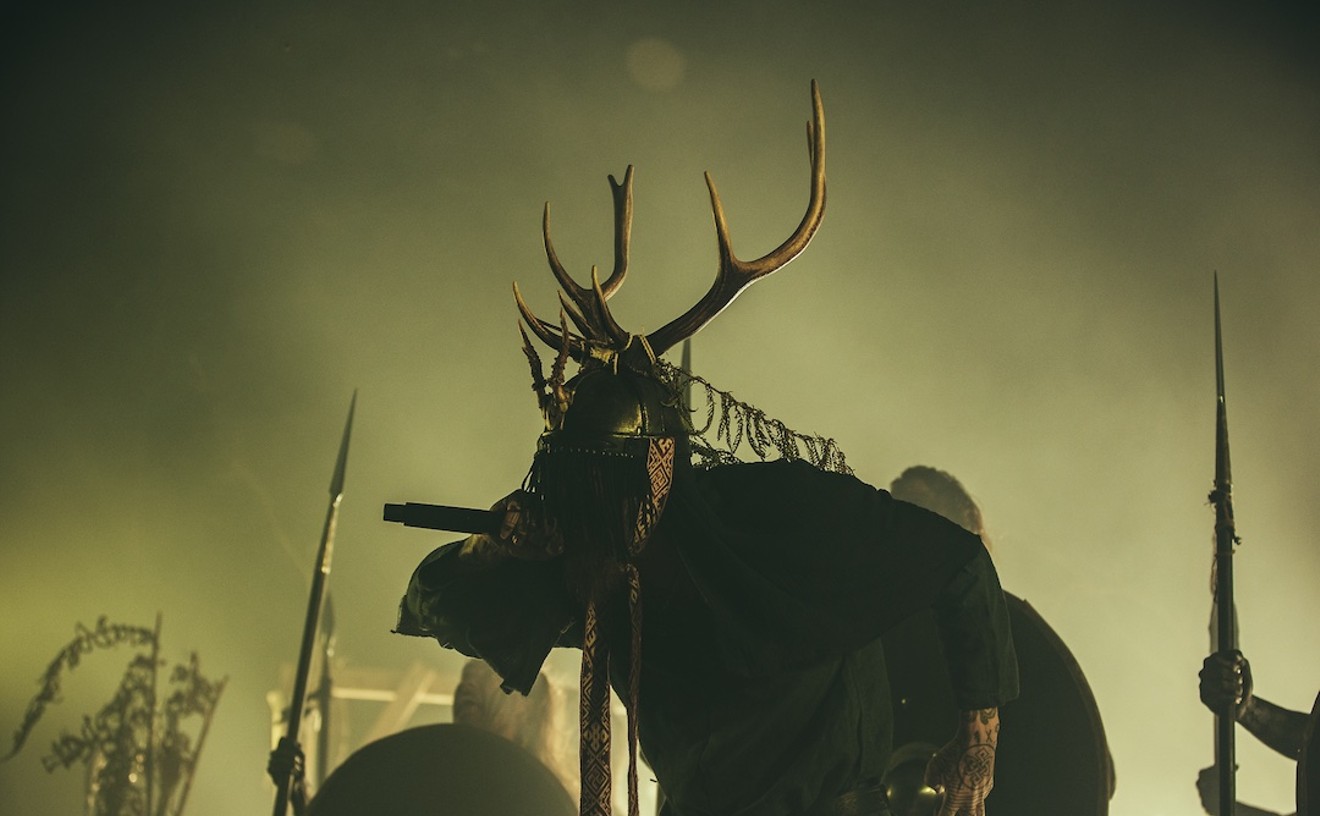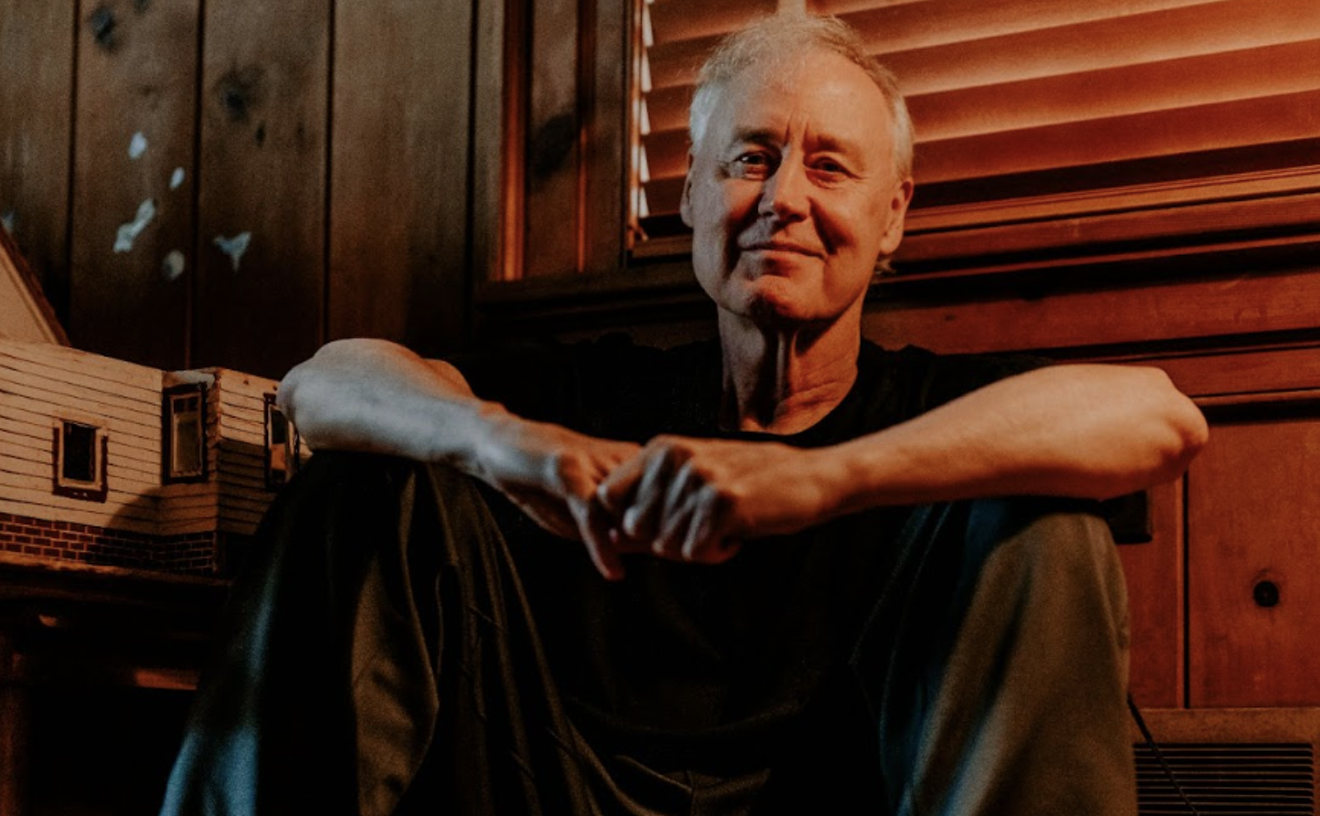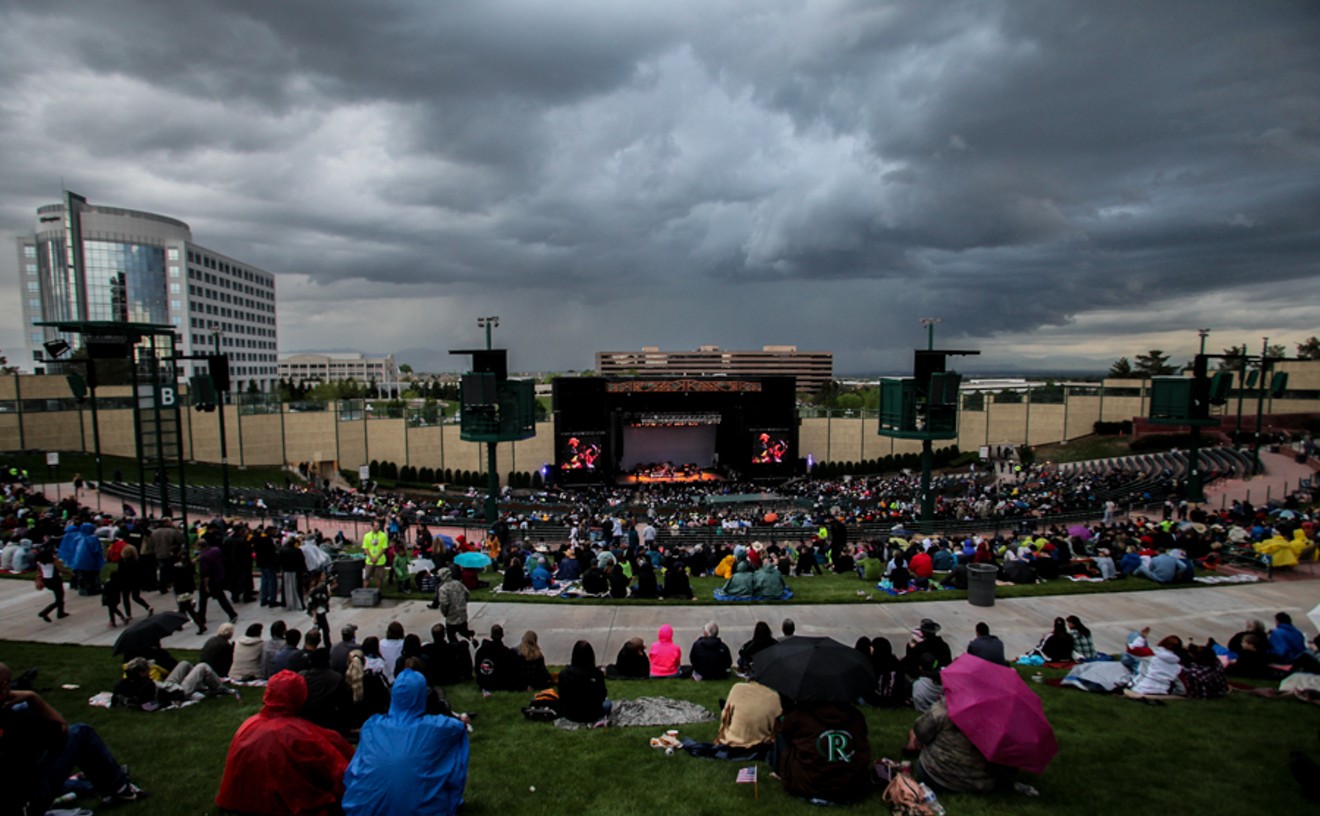"With careful and penetrating understanding of ourselves, we will learn to unite and destroy a world built on the backs of a programmed slave class ruled by fascist political systems. The Global Ruling Elite has a new enemy who will not go into darkness."
This statement may sound like an angry missive from the King of Pop to Sony Records executive Tommy Mottola. But it is actually part of a coda that governs the musical and spiritual exploits of Heavyweight Dub Champion, a dub-electronica collective from the rural outskirts of Boulder. Those words -- and lots of others like them -- appear in the crew's "Last Champion Manifesto," a scripturally spirited rant that accompanies the group's ambitious debut record, Survival Guide for the End of Time. The disc -- an ill-bent mix of industrial apocalyptic hip-hop dubtronica -- features contributions from core Heavyweight members Resurrector and Patch, whose monikers mirror their survivalist ethos. Rapper Apostle, Wailer B., Elon, Stero Lion, Vill, Totter Todd and DJ Hot Daddi 36-0 are among the performers who fill out the pages of the Heavyweight guidebook.
Each member of the Champion crew has caused some major static in the local spoken-word, roots-reggae and hip-hop scenes during the past decade. Most are accustomed to presenting their work, almost sermon-like, in front of audiences of both converts and unbelievers. They are, maybe, accustomed to the manifesto mind. So it's no surprise that when they got together, they created a work that can safely be called a concept album -- and a heavy one, at that. According to Resurrector, Survival Guide "relates to the coming of the Last Champion, an interdimensional spiritual warrior, who is bringing people together throughout the world to try to elevate consciousness in a way that will focus people on the healing of themselves and the healing of the world, and help put people in a more offensive position."
The dub warriors say the seeds of Survival Guide lie in their childhoods: Both Resurrector and Patch claim to have encountered a supernatural entity called the Last Champion at an early age. Resurrector, who grew up in Baltimore, experienced visions during a childhood filled with severe migraine headaches and lengthy vomiting sessions. While living in the shadowy haze of the Big Apple as a child, Patch made contact with the spirit after experiencing seizures and blackouts. The two met up in Colorado years later and became creative partners. They hunkered down in a sonic laboratory -- a log cabin equipped with an outhouse and no running water -- and began to shape their music. Eventually, they conceived a kind of soundtrack for their shared end-time scenario: a heavyweight knockdown between the Last Champion and the forces that threaten to imprison the planet.
The result is a twenty-track sonic fusillade of massive electronic dub that serves up post-apocalyptic prescriptions for survival in a tension-filled new millennium. Each track corresponds to a chapter in the 64-page booklet that comes in the disc's inner sleeve. Also included is a fold-out poster, designed by local artist Jher 451, which illustrates such modern-day malfeasance as martial law and a poisoned environment. It also includes diagrams of citizens developing underground networks to combat such pestilence.
Structurally, the record moves from the announcement of the battle to the rallying calls of the Last Champion's chosen army -- followers who unite to liberate individuals and the Earth -- to the eventual announcement of the Last Champion as a victor in the championship against predators who have put a stranglehold on humanity's innate desire to creatively seek truth, beauty, pleasure and power.
Whew.
"We use the symbolism of an army and a gathering of soldiers," says Resurrector. "There are ways that you can generate, and create in your mind, to prepare for a life that is focused on trying to elevate consciousness and liberate people -- and to combat the progression of a society that, we believe, generates closed-minded sort of educational frameworks that don't allow for people to explore their own power and creative tendencies."
Moreover, Heavyweight Dub Champion believes the hypnotic properties encoded in the DNA of its sound help individuals to better achieve liberated states.
"I think there is a key trance aspect to it," explains Patch. "We can bring people into an element where they are moving and pulsing as one and really feeling the rhythm. When people are moving in a trance within music, that opens up their minds for someone like Apostle or Stero Lion to really speak some good words and wisdom that they've learned over the years."
Apostle, whose nom de plume is an acronym for Ascending Power Over Secular Territories Liberating Earthlings, acts as a hip-hop revivalist barker/preacher for the group. He says Heavyweight Dub's music "is trying to present a new paradigm of how people view spirituality. We're trying to evoke a spiritual experience."
Saxophonist Totter Tod describes the effects of the group's music in more graphic terms.
"If you cut the heart out of two people -- if you cut the heart out of you and cut a heart out of someone else and place it on the same table right next to each other -- they, in a very short amount of time, will beat to the same beat," he says. "That's true, I think, with any biorhythm. So as a performer, if you can induce a mental, physical, emotional state in yourself and then project it and amplify it to someone else -- a crowd, naturally, whether they're conscious of it or not, will go to the same places as the performer."
During Operation Raise the Dead, the band's upcoming Halloween show, the collective hopes to take its audiences through a de-zombification process that will, according to Resurrector, "create a space for a new sort of psychology that will welcome helpful spirits that will, if you call them, come to assist you," he says. "It's more about raising the walking dead than raising specifically dead people from their graves. From our perspective, it's waking people up who are essentially walking dead through their lives. For this show, we're combining our philosophy with the general Halloween concept of uniting with spirits."
"Raise the Dead is a concept that is an exalting of the ancestors," adds Apostle.
When the group performs live locally, it is often joined by a revolving cast of area artists that includes Slam and the Unstoppable 1; DJs Ivy, Psychonaut and Illnaughty; and video collectives like Free Speech TV. The guest performers help create a dynamic multimedia presentation that's designed to bombard the senses.
Heavyweight Dub Champion's sound has transcended its beginnings as an acoustic-driven dub band, a project brought to life by Patch and Resurrector. The group was conceived as a side project to the reggae group Roots Revolt, which Resurrector founded and Patch played guitar for. Heavyweight Dub Champion evolved as a more stable platform when that project eventually imploded in chaos, partly because of various legal imbroglios that plagued individual members. Heavyweight Dub Champion was born firmly grounded in roots-oriented reggae dub music.
"When we started, none of us liked electronic music," says Resurrector. "We were much more into the idea of every instrument being played specifically by living actual people at that moment. When we started this band as a side project, all we had was an old analog four-track, a bunch of drums, a guitar and a bass. We would make tracks one by one. We would actually simulate a whole drum set, which we didn't have at the time either. [We just used] a lot of old Guatemalan drums, Egyptian drums and shakers and layered one track on top of next -- all raw equipment, nothing electronic or digital involved."
The players shed their Luddite approach to recording when they learned to use samplers and sequencers, which provided a sonic efficiency and diversity to their arsenal.
"We started to realize that if we actually used sequencers and electronic vehicles like samplers, where you can layer track upon track, it was a little bit more efficient to convey the vibration and the sound we were trying to create," says Resurrector.
Instead of hiring 25 musicians to round out the sound, the players use technology to re-create and manipulate recordings. When sculpting their sound for mass consumption, Resurrector, Patch and Totter Todd record all of the live instrumentation in the studio, and from there they "use samplers to record and sequence from all the instruments we play and layer on top of layer to create a certain presentation and vibe for each tune," according to Resurrector. This approach underscored the four work-intensive years that preceded the release of Survival Guide for the End of Time.
To complete the final revisions of the Survival Guide, the group ventured to Los Angeles to work with Scott Wolfe and Brian "Big Bass" Gardner, two of the most seasoned technicians in the urban-music industry. For two years, Wolfe was the in-house engineer for Death Row Records and played an important role in the production of classic recordings from artists such as Dr. Dre, Snoop Dogg and Tupac Shakur. (Additionally, Wolfe "toured the world with Gwar, and his favorite music is dub, so he was absolutely perfect," says Resurrector.) Wolfe recorded, co-produced and co-mixed the group in North Hollywood's famous Bay 7 studios, home to some of the best vintage analog recording equipment on the planet.
"We prefer the analog sound, because it's based on actual vibrations as opposed to digital reproduction of a sound," explains Resurrector, who credits Wolfe's tutelage "for giving us the knowledge to understand how much the medium that you put the music on affects the music."
In the Bernie Grundman Mastering studio, Gardner put the final touches on the record. Survival Guide was among many pop artifacts, including Michael Jackson's Thriller, to be mixed in the space.
"We wanted somebody who has had amazing music pass through his hands," says Resurrector. "You've had Prince, Michael Jackson, Sting, Frank Sinatra and many of the Marleys sitting on that couch of the studio."
With its California mission complete, the collective returned home ready to mount a full-on dub offensive; Survival Guide for the End of Time was released in May, and Heavyweight has played more and more live shows. The band recently completed a successful tour of the Pacific Northwest and is broadening plans for Champion Nation Recordings, its label. Weary of corporate control over its product, for the time being Heavyweight Dub Champion has chosen to work only with a few like-minded independent retail outlets and art collectives in getting its propaganda to the public.
"We're very particular who sells our product for us, because we don't want to help corporations further themselves with our music if their goals aren't at least sympathetic to ours," says Resurrector. The group will pursue a more aggressive national campaign in November via the Web site (championnationnet.com), which it plans to use to build underground distribution networks.
Until then, Resurrector and his mates are hoping their story mirrors that of the Last Champion, who triumphs and elevates, saving the world and ultimately himself.










